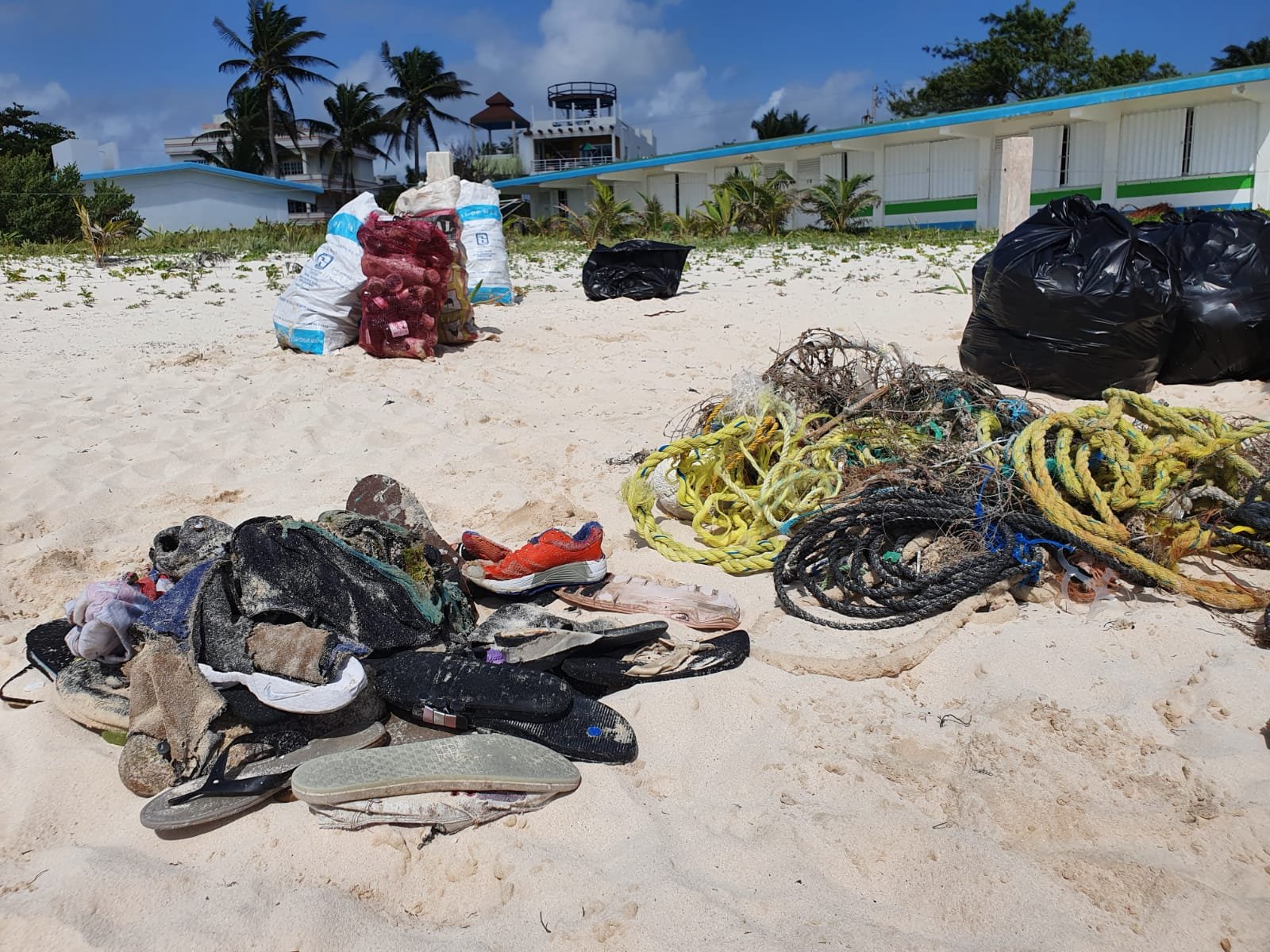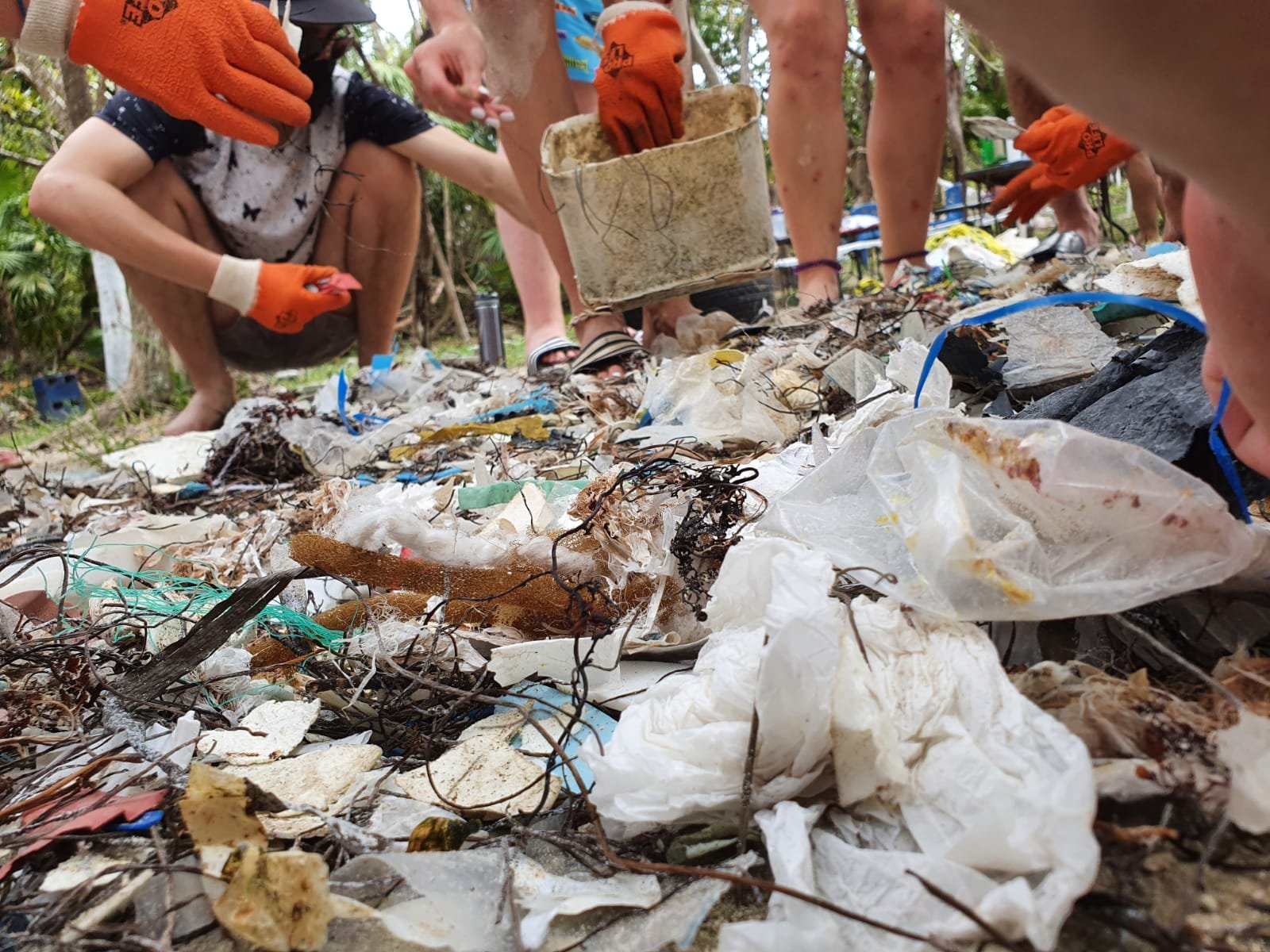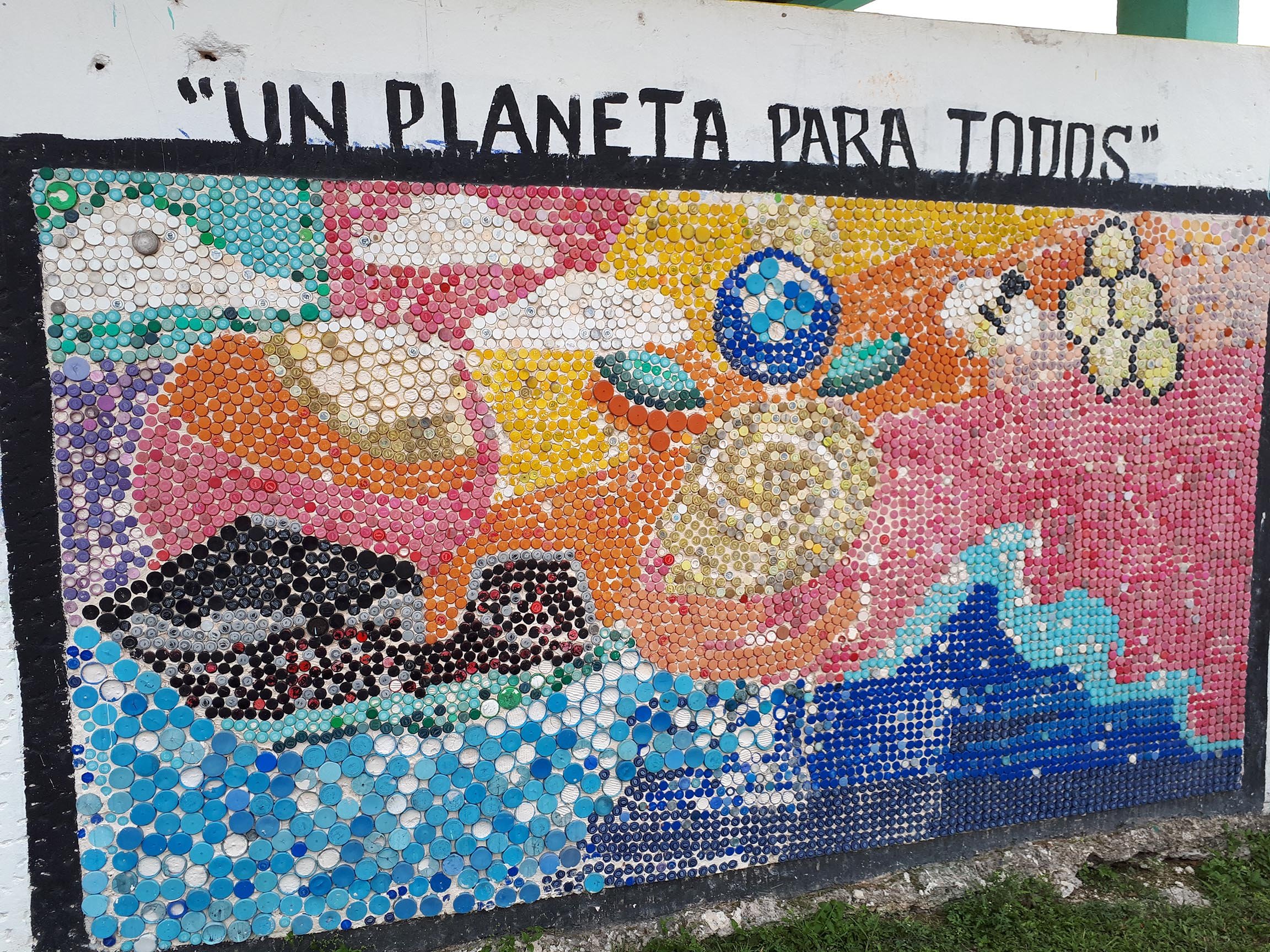Marine Conservation - Live From Mexico - Part 2
By Rose Little - Wildlife & Welfare Researcher volunteering with Global Vision International (GVI) in Puerto Morelos, Mexico
Ocean Waste & Beach Cleans
With 8 million tonnes of plastic entering our ocean each year we are in an environmental crisis. Every piece of plastic ever made is still in existence. We must fight the creation of new plastics and significantly reduce our single use plastic usage to protect our home. However, it is equally important to also remove plastic waste from our waterways. 80% of all marine waste comes from land-based sources and a huge 75% of that remains uncollected in our oceans. It is thought that by 2025 there will be 3 tonnes of marine debris for every 1 tonne of fish. Every time I hear these facts, I want to keep making significant changes in my life to reduce the amount of waste I create. I also want to inspire people to change their lifestyles to eliminate marine debris pollution.
Ocean plastics are often mistaken for food due to their size and colouration which causes health, malnutrition and behavioural issues to many aquatic and terrestrial animals and plants. The Laysan Albatross chick has been found to have 45% plastics in the total wet mass of their diets and even corals are suffering from plastic pollution through light deprivation, toxin release, anoxia, pathogens carried by the plastic and entanglement.
Often when ocean debris is ingested it acts like a poison pill. Free-floating pollutants from the land such as PCBs (polychlorinated biphenyls), PAHs (polycyclic aromatic hydrocarbons) and heavy metals adhere to the surface of plastics. All of which are harmful even in small quantities, however the higher up the food chain the more of these toxins are present in individuals through a process called bioaccumulation. Bioaccumulation is the accumulation of a substance, such as a toxic chemical, in various tissues of a living organism. Bioaccumulation takes place within an organism when the rate of intake of a substance is greater than the rate of excretion or metabolic transformation of that substance. This process is particularly impactful when the entire organism is eaten - for example when we eat shellfish, we eat the entire organism and so have a higher risk of consuming plastics and other toxins.
The ocean currents make up five major gyres: The North and South Pacific Subtropical Gyres, the North and South Atlantic Subtropical Gyres, and the Indian Ocean Subtropical Gyre. As the currents move, they draw in debris to the centre of each gyre. These are often called plastic islands due to the amount of plastic waste floating there. The largest of these islands is the Great Pacific Garbage Patch (GPGP) which is located between California and Hawaii and is 2 million km2 in diameter and contains 80,000 tonnes of waste. This is the equivalent weight of 500 jumbo jets! These plastic islands are primarily made up of fishing gear (46% of the GPGP is fishing nets). Studies have shown that around 700 species have encountered marine debris and over 90% of these encounters were with plastic. Bycatch sea turtles caught by fisheries can have up to 74% (DW) of their diet composed of ocean plastic.
Every week the staff and volunteers here at GVI in Puerto Morelos head out to our local beach for an hour of beach clean-up.
In March we covered 5.2km of beach and collected 160.4kg of waste (of which 63.4kg was recyclable).
The waste ranges from fishing gear and construction materials to shoes and bottle caps. We also find hundreds of pieces of tiny microplastics and microfoams in the sand and seaweed. Microplastic and microfoams are any piece of foam or plastic that are under 2.5cm. Each piece of plastic and other waste removed from the environment lessens the risk of animals and plants getting injured from waste. It also promotes good marine conservation practices in the local communities as people stop to ask what is going on or how to get involved. At GVI we collect data on what and how much we collect from beach cleans, focusing on items of local concern which include lollipops and shoes. This data is then given to the Ocean Conservancy. The Ocean Conservancy is a non-profit environmental advocacy group based in Washington DC. They collate citizen science data into a single data set called TIDES (trash information and data for education and solutions) which is used alongside peer reviewed science to formulate ocean policy at federal and state government level.
There are many misconceptions when it comes to beach cleans. Firstly, although it is somewhat easier to pick up the larger items of waste such as plastic bottles, shoes and lollipop sticks it is the tiny microplastics that are more urgent. There are also many cultures who believe the problem will go away on its own without any human intervention. Or the other extreme is that beach cleans are the only thing we can do to help fight against the plastic problem. This is not true. Here at GVI we believe that every dive is a DAD (Divers Against Debris) dive, picking up waste from the ocean if it is safe to do so. DAD was set up by Project Aware to record the ocean waste at depth. Since its launch in 2011 over 1.6 million pieces of trash have been reported from 120 countries worldwide. This flagship citizen science program is the only underwater debris data collection program of its kind. We can also educate and raise awareness of what is happening, individually we can all begin to reduce our plastic and single use materials and encourage appropriate waste disposal. The litter from land locked areas will also make its way to our ocean through wind and rivers. Plastic accumulates in the ground and the ocean and will never degrade or decompose and so it is every person's responsibility to not litter and pick up any waste they see in the environment.
My favourite saying, I have heard throughout my travels with GVI is “it’s not my trash but it’s my planet”. This is something that I believe we can all live by to put a stop to the plastic problem in our environments.
Please click the link below to visit our Environmental Calendar. Each month we focus on a new environmental topic and look in to how we can all help to improve the world we live in.






